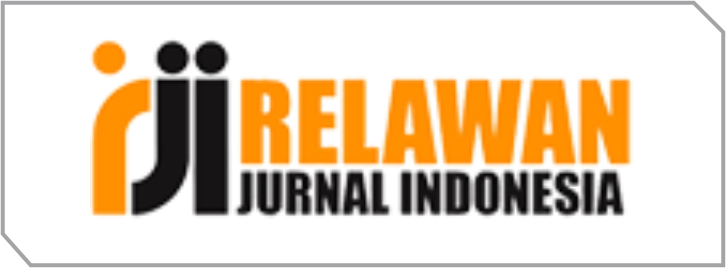Key Opinion Leader (KOL) in Influencing Customer’s Buying Decision on Fashion Products through Instagram
DOI:
https://doi.org/10.53748/jbms.v4i1.84Keywords:
Opinion Leader, Fashion, Instagram, Purchase IntentionAbstract
Objective This study aims to assess the impact of key opinion leader, intention to interact, and intention to follow the advice on purchase intention. Methodology To collect the sample data, this research using online questionnaire and get 131 respondents who has Instagram account and looked at influencer accounts for fashion references. The collected data was analysed by Structural Equation Model (SEM) using Smart PLS 3. Findings The result shows that Key opinion leader have a direct and indirect affect through consumer behavior such as intention to follow the advice and intention to interact as mediator to purchase intention. Novelty Investigating the mediating role of intention to interact and intention to follow the advice in the relationship between key opinion leader and purchase intention.
Downloads
References
Bairagi, R., & Munot, M. V. (2019). Research Methodology: A Practical and Scientific Approach. CRC Press.
Bao, T., & Chang, T. L. S. (2014). Finding disseminators via electronic word of mouth message for effective marketing communications. Decision Support Systems, 67, 21–29.
C. R. Putri, & Agus, A. A. (2019). Analysis of key opinion leadership on Instagram to online beauty product purchase. 2nd International Conference of Computer and Informatics Engineering (IC2IE), 193–198. https://scholar.ui.ac.id/en/publications/analysis-of-key-opinion-leadership-on-instagram-to-online-beauty-
Casaló, L. V., Flavián, C., & Ibáñez-Sánchez, S. (2017). Antecedents of consumer intention to follow and recommend an Instagram account. Online Information Review, 41(7), 1046–1063. https://doi.org/10.1108/OIR-09-2016-0253
Casaló, L. V., Flavián, C., & Ibáñez-Sánchez, S. (2020). Influencers on Instagram: Antecedents and consequences of opinion leadership. Journal of Business Research, 117, 510–519. https://doi.org/10.1016/j.jbusres.2018.07.005
Chan, K. K., & Misra, S. (1990). Characteristics of the opinion leader: A new dimension. Journal of Advertising, 19(3), 53–60.
Daoud, J. I. (2017). Multicollinearity and regression analysis. Journal of Physics: Conference Series, 949, 012009. https://doi.org/10.1088/1742-6596/949/1/012009
Djafarova, E., & Rushworth, C. (2017). Exploring the credibility of online celebrities’ Instagram profiles in influencing the purchase decisions of young female users. Computers in Human Behavior, 68, 1–7.
Ghozali, I., & Latan, H. (2015). Partial Least Squares: Konsep, Teknik, dan Aplikasi Menggunakan Program SmartPLS 3.0 (2nd ed.). Badan Penerbit Universitas Diponegoro.
Hair, J., Black, W., Babin, B., & Anderson, R. (2010). Multivariate Data Analysis. Prentice Hall.
Huang, Y. C., Wu, Y. C. J., Wang, Y. C., & Boulanger, N. C. (2011). Decision making in online auctions. In E. Rausch (Ed.), Management Decision, 49(5), 784–800.
Jankowski, K. R. B., Flannelly, K. J., & Flannelly, L. T. (2017). The t-Test: An influential inferential tool in chaplaincy and other healthcare research. Journal of Health Care Chaplaincy, 24(7), 30–39.
Jayani, D. H. (2020). 10 media sosial yang sering digunakan 2020. https://databoks.katadata.co.id/datapublish/2020/02/26/10-media-sosial-yang-paling-sering-digunakan-di-indonesia
Jeyhan, R. B., & Pangaribuan, C. H. (2023). The mimicker and the mimicked: Desirable digital influencer to follow (taste leader vs. opinion leader). Multidisciplinary Science Journal, 6(6), 2024090.
Kavanaugh, A., Zin, T. T., Carroll, J. M., Schmitz, J., Pérez-Quiñones, M., & Isenhour, P. (2006). When opinion leaders blog: New forms of citizen interaction. In Proceedings of the 2006 International Conference on Digital Government Research (pp. 79–88). https://doi.org/10.1145/1146598.1146628
Kim, J. E., Lloyd, S., & Cervellon, M. C. (2016). Narrative-transportation storylines in luxury brand advertising: Motivating consumer engagement. Journal of Business Research, 69(1), 304–313.
Kirvesmies, T. (2018). Parasocial relationships between Gen Z and social media endorsers [Master’s thesis, University of Tampere]. https://core.ac.uk/download/pdf/250152394.pdf
Kotler, P. (2001). Marketing Management (10th ed.). Pearson Education Canada.
Merwe, R., & Heerden, G. (2009). Finding and utilizing opinion leaders: Social networks and the power of relationships. South African Journal of Business Management, 40(3), 65–76.
Nemoto, T., & Beglar, D. (2014). Developing Likert-scale questionnaires. JALT2013 Conference Proceedings. https://jalt-publications.org/files/pdf-article/jalt2013_001.pdf
Nisbet, M. C., & Kotcher, J. E. (2009). A two-step flow of influence? Opinion-leader campaigns on climate change. Science Communication, 30(3), 328–354.
Park, C. S. (2013). Does Twitter motivate involvement in politics? Tweeting, opinion leadership, and political engagement. Computers in Human Behavior, 29(4), 1641–1648. https://doi.org/10.1016/j.chb.2013.01.044
Pusat Pelayanan Statistik Dinas Komunikasi, Informatika, dan Statistik Provinsi DKI Jakarta. (n.d.).
Rahman, S. U., Ali, T., Saleem, S., Khan, M. A., & Akhtar, S. (2014). Consumers’ adoption of apparel fashion: The role of innovativeness, involvement, and social values. International Journal of Marketing Studies, 6(3), 49–64. https://doi.org/10.5539/ijms.v6n3p49
Rogers, E. (1983). Diffusion of Innovations (3rd ed.). Free Press.
Santoso, S. (2018). Menguasai Statistik dengan SPSS 25. PT Elex Media Komputindo.
Sekaran, U. (2003). Research Methods for Business: A Skill Building Approach. Wiley & Sons.
Sekaran, U., & Bougie, R. (2016). Research Methods for Business: A Skill Building Approach. Wiley & Sons.
Spears, N., & Singh, S. N. (2004). Measuring attitude toward the brand and purchase intentions. Journal of Current Issues & Research in Advertising, 26(2), 53–66.
Sugiyono. (2013). Metode Penelitian Kuantitatif, Kualitatif, dan R&D. Penerbit Alfabeta.
Taber, K. S. (2018). The use of Cronbach’s alpha when developing and reporting research instruments in science education. Research in Science Education, 48(6), 1273–1296.
Thakur, R., Angriawan, A., & Summey, J. H. (2016). Technological opinion leadership: The role of personal innovativeness, gadget love, and technological innovativeness. Journal of Business Research, 69(8), 2764–2773.
Unaradjan, D. D. (2019). Metode Penelitian Kuantitatif. Penerbit Unika Atma Jaya Jakarta.
Vargo, S. L., & Lusch, R. F. (2008). Service-dominant logic: Continuing the evolution. Journal of the Academy of Marketing Science, 36(1), 1–10.
Wang, Y. (2018). The influential factors of opinion leaders towards consumers’ purchase intention in virtual communities of consumption. The Keizai Gaku, Annual Report of the Economic Society, Tohoku University, 76(1), 237–257.
Weimann, G., Tustin, D. H., van Vuuren, D., & Joubert, J. P. R. (2007). Looking for opinion leaders: Traditional vs. modern measures in traditional societies. International Journal of Public Opinion Research, 19(2), 173–190.
Zhao, Y., Kou, G., Peng, Y., & Chen, Y. (2018). Understanding influence power of opinion leaders in e-commerce networks: An opinion dynamics theory perspective. Information Sciences, 426, 131–147. https://doi.org/10.1016/j.ins.2017.10.031
Downloads
Published
How to Cite
Issue
Section
License
Copyright (c) 2024 Journal of Business, Management, and Social Studies

This work is licensed under a Creative Commons Attribution 4.0 International License.
Authors retain copyright and grant the journal right of first publication with the work simultaneously licensed under a Creative Commons Attribution 4.0 (CC 4.0) that allows others to share the work with an acknowledgment of the work's authorship and initial publication in this journal.


















